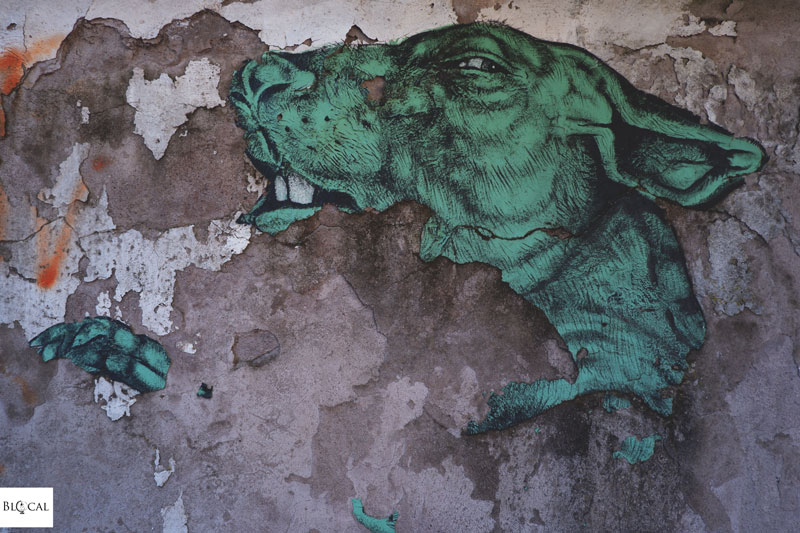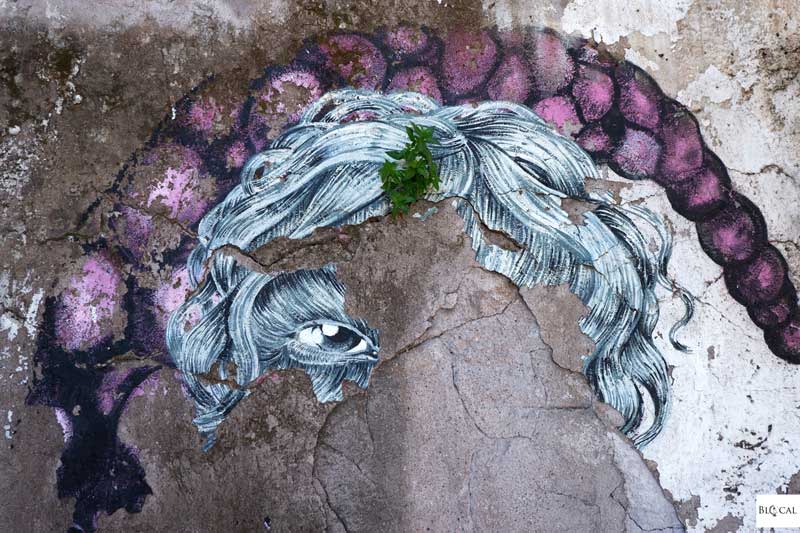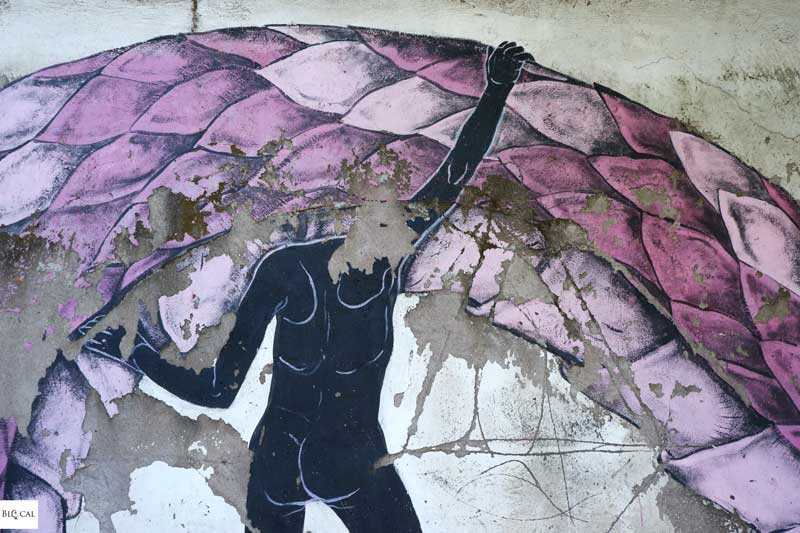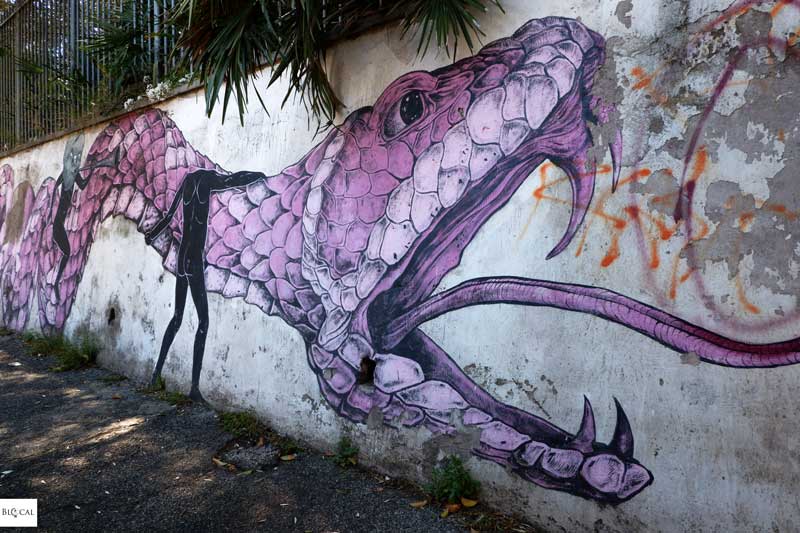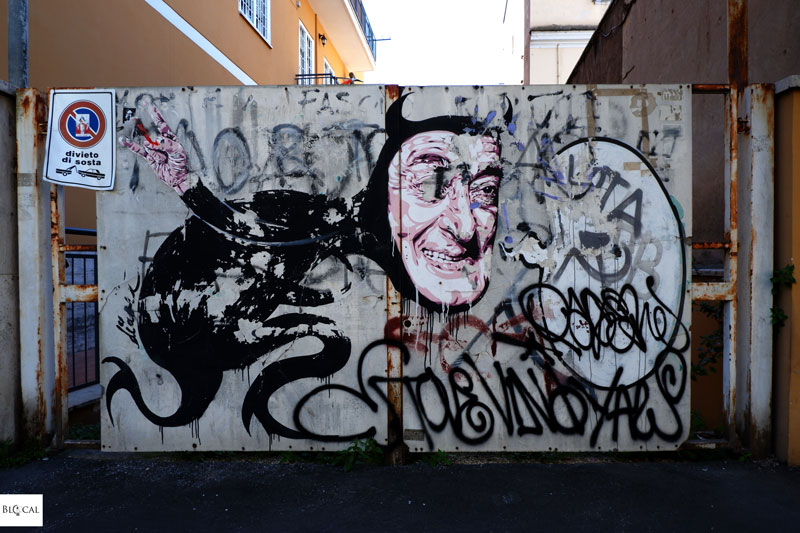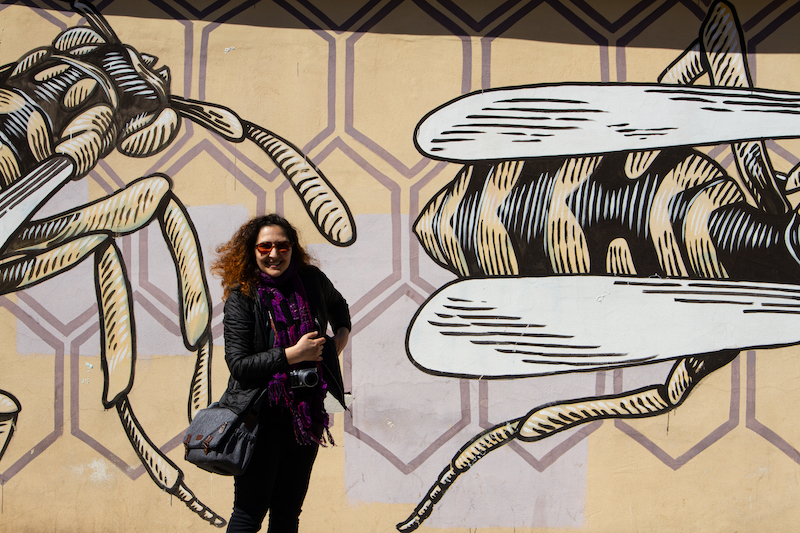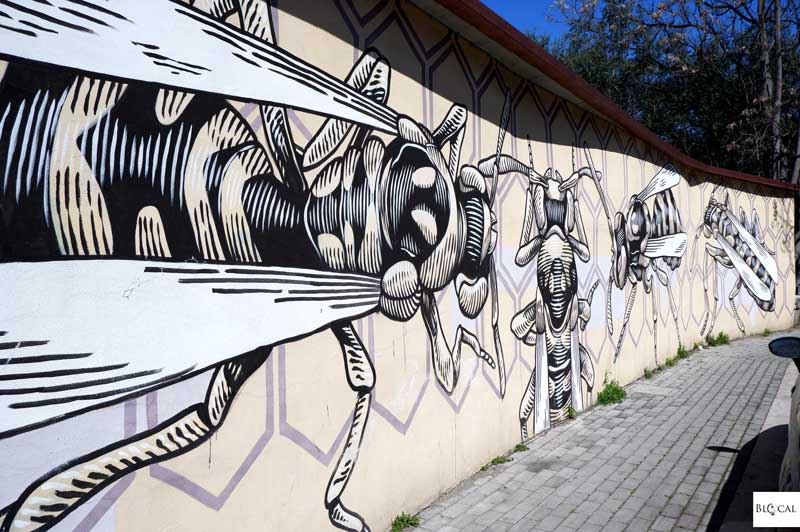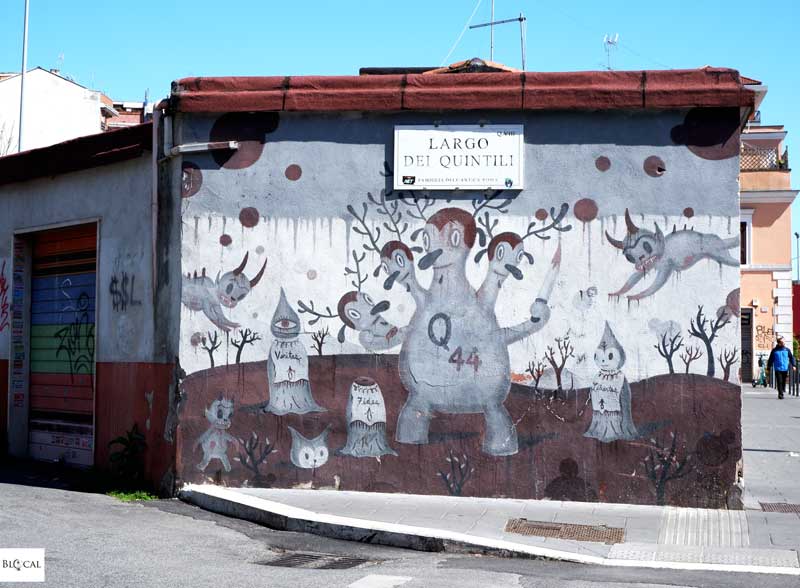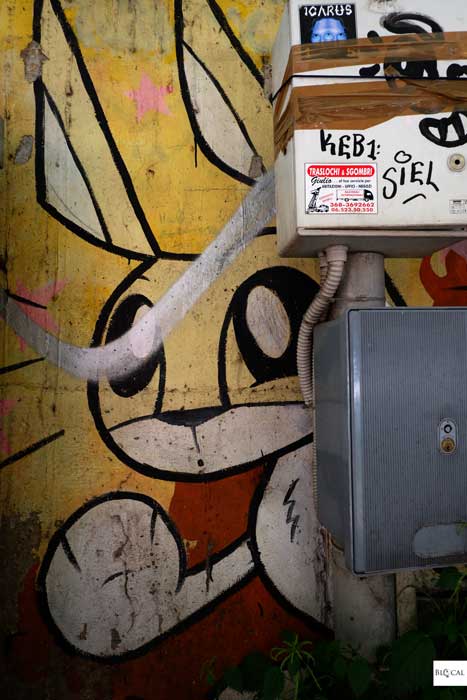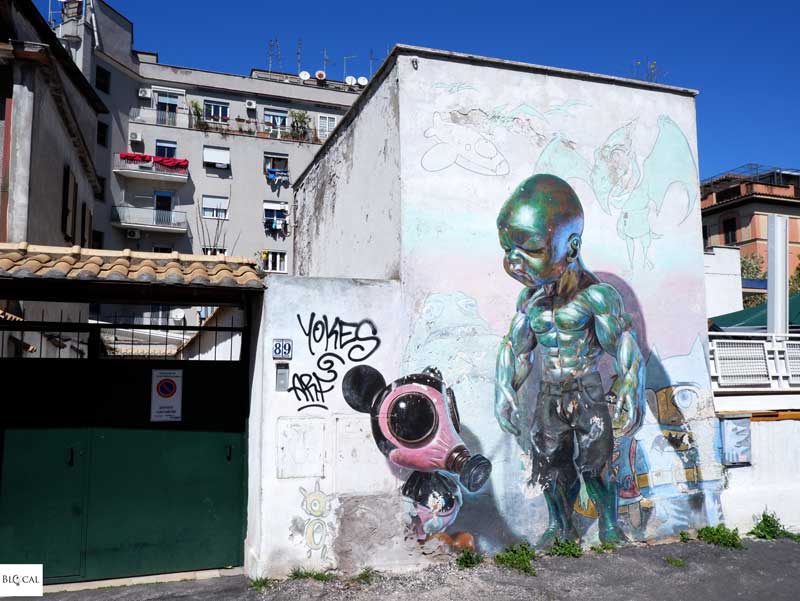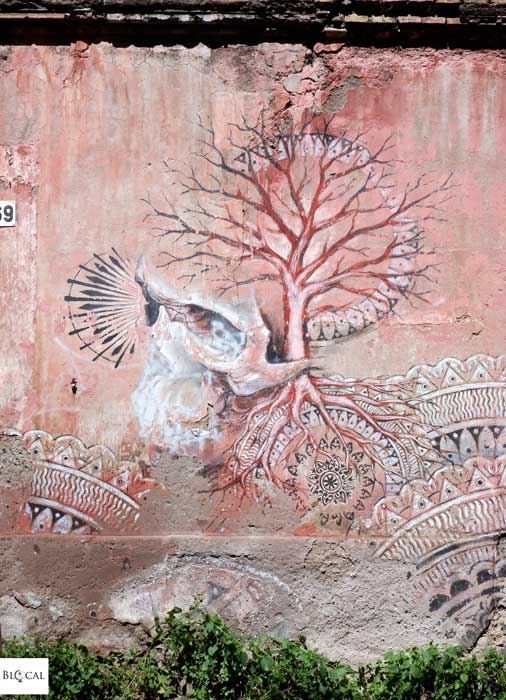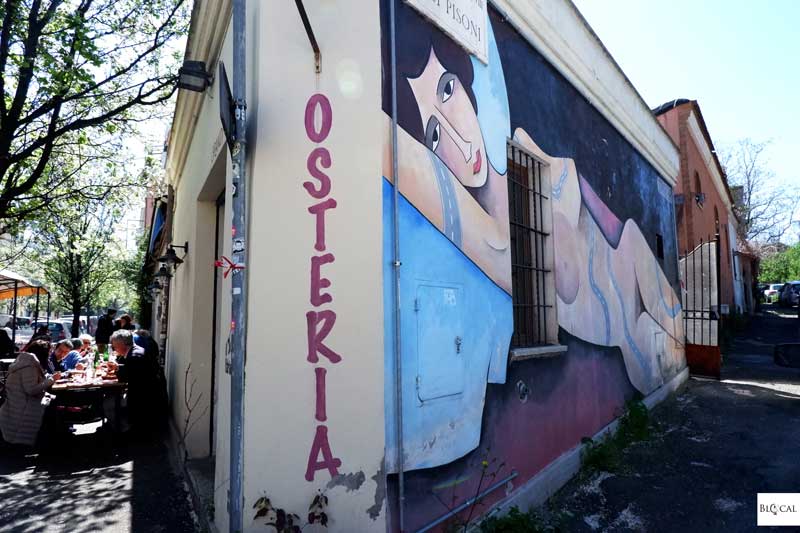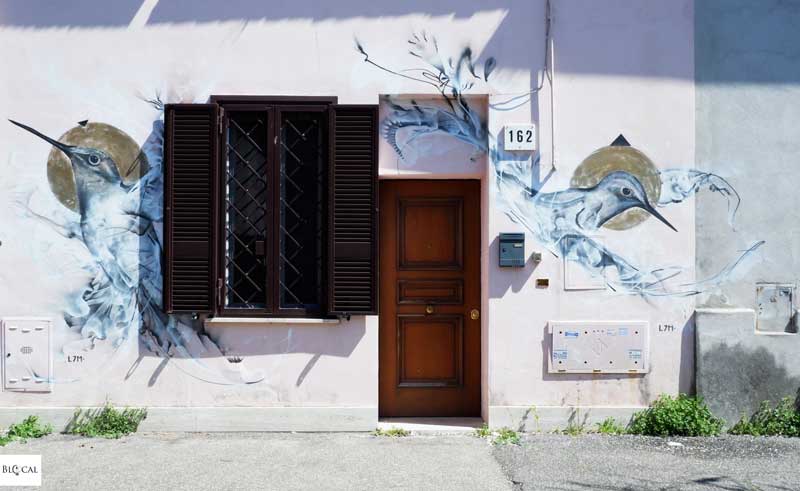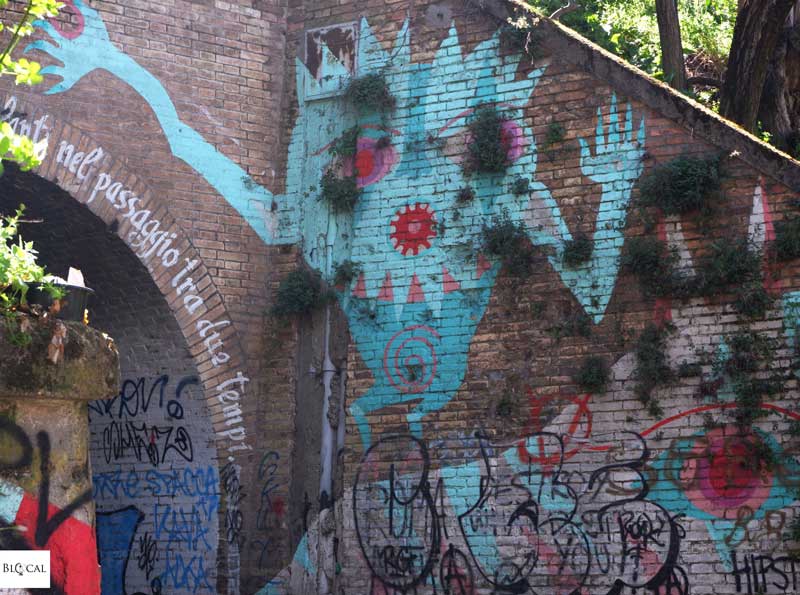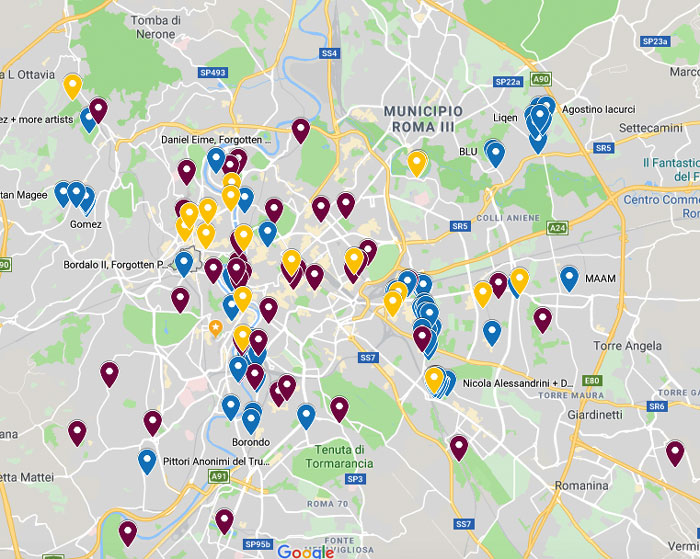At last, I’m updating all my articles about street art in Rome, starting with Quadraro Vecchio, the first urban art hotspot in the city.
I’ve already brought you to hunt street art around Quadraro Vecchio in 2014 and then again in 2015; although there are any new murals around the Quadraro neighbourhood, today I want to go back to document how these murals are aging -because ephemerality is one of the main characteristic of street art ;)
- Read also: “Street Art in Rome: A Guide to Ephemeral Art in Italy’s Eternal City” the ultimate travel guide to the top 26 neighborhoods to find street art in Rome, with handpicked local tips to eat, drink and shop in Rome like a local.
Discover street art in Quadraro neighbourhood
Walking the streets of Quadraro Vecchio means immersing oneself in a village-like atmosphere: a place where the memory of the neighbourhood is kept alive and is handed down by its inhabitants and longtime shopkeepers. The history of the area – marked first and foremost by one of the key episodes in Rome during the Second World War, i.e. the Nazi roundup of around 2,000 men in April 1944 – is even eternalised on its walls.
Between 2010 and 2014, street artists from Italy and elsewhere were invited to unleash their creativity on the walls of the two-storey houses typical of the borough that was built in the 1930s. It’s an architectural style that renders Quadraro Vecchio an oasis nestled between the dreadful apartment blocks erected in the post-war era along the Via Tuscolana.
Street art made its way to Quadraro courtesy of MURo, an acronym for ‘Museo di Urban Art di Roma’. This project defines urban art as a form of art which uses the same tools as street art, and for which the ‘streets’ remain the primary source of inspiration.
MURo is one of the very first urban art projects in Rome. What the Roman street artist David ‘Diavù’ Vecchiato proposed to the city was, at the time, completely uncharted territory. And yet, despite its pioneering role, the Museo di Urban Art di Roma can boast not only the collaboration with world-famous street artists, but also – and above all – the involvement of residents and neighbourhood committees. It is therefore a well-structured project which has allowed the realisation of street art works which are particularly representative of the history and identity of Quadraro. Let’s go and explore these artworks…
The murals of Quadraro that recall its anti-fascist resistance
Many of the murals of Quadraro come into being with the intention of celebrating the identity of a working-class and communist neighbourhood which gave asylum to partisans and deserters. Renamed ‘the wasp’s nest’ for its impregnability, this resistance stronghold was thoroughly searched by the German army on 17 April, 1944. 900 men were deported to Germany, only half of whom managed to return to Quadraro at the end of the war.
‘Wasp’s nest’ is also the title of an elongated mural painted in 2014 by Lucamaleonte in the Via del Monte Grano. The Rome-native street artist is known for his depictions of insects, animals and floral patterns on the walls of the Italian capital. Next to his signature, Lucamaleonte painted the physics formula of resistance.
Another street art work in Quadraro dedicated to the victims of the Nazi round up, is ‘Q44’. It was created in 2012 by Gary Baseman, the American street artist who is famous around the world for his dreamlike characters, among whom ‘Buckingham Warrior’: a monster in the form of a deer inspired by the figure of his father – a partisan in Poland during the Nazi occupation. The winged demons floating around the Buckingham Warrior in this beautiful mural symbolise the Nazi troops, while the three figures with surrealist features represent the ideals that have inspired the partisans in their fight against Nazism: Liberty, Trust and Truth.
Roman street artist Diavù also wanted to remember the resistance in a work he painted for the project he himself curated. This mural is populated by a series of pop-coloured, cartoon-like characters representing the inhabitants of Quadraro who were put up against the wall by the Nazis in 1944.
Read also: The top 15 murals of Political Street Art in Rome
There were two more pieces (one by French artist Zelda Bomba and one by Mexican artist Malo Farfan) recalling the anti-fascist core of Quadraro neighbourhood, more precisely the role of women in the Resistance, but they have been painted over. You can still admire them in my older article about street art in Quadraro neighborhood.
Street art superstars in Quadraro Vecchio
Back in 2010, MURo was the first project that managed to bring to Rome street artist of international acclaim. It was a time when urban art had not yet become an integral part of the politics of redevelopment of numerous peripheral neighbourhoods.
Among the street art superstars that have made their way to Quadraro, we find Ron English, an American pop artist who has panted his famous “Temper Tot”, a muscular baby about to burst into tears. Next to him, we find a Mickey Mouse wearing a gas mask to raise attention to worldwide pollution.
Ron English created this mural along with his assistant Beau Stanton, who then decided to stay in town a little longer to single-handedly paint another mural in Quadraro. This work shows a skull (again, symbolising the Nazi roundup) from which life continues to be born in the form of a tree.
For his part, Fin DAC has painted two of his geishas (one of which is situated in a private courtyard and cannot be viewed from the street, unfortunately): masked woman whose uniqueness the Irish artist wishes to highlight, often through the depiction of traditional Asian dresses. In this way, his geishas stand out from the stereotypical female figures in advertisements with whom they often share building facades around the world.
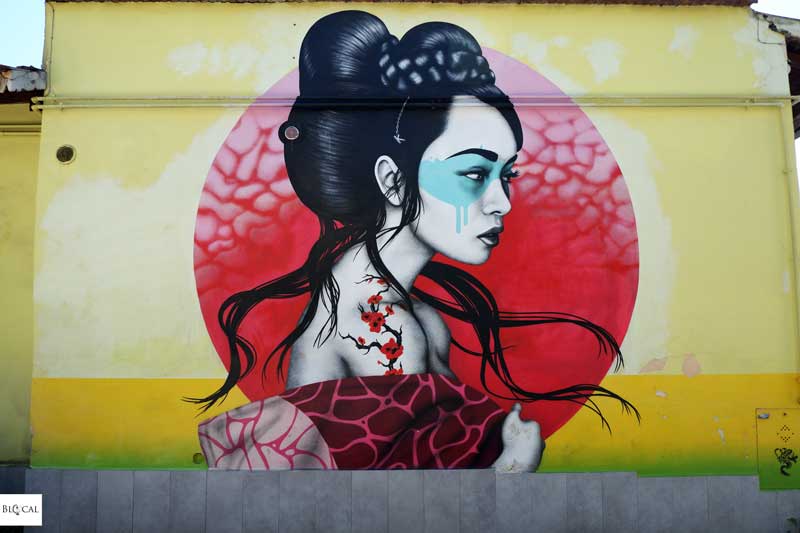
(as you can see in my older article about street art in Quadraro)
Then there’s the Berlin-based artist Jim Avignon who has rendered the goddess of Art, in the guise of one of Amedeo Modigliani’s women. Paying attention to the details, the streets painted on her body identify her as the protector of a specific art form: street art.
Read also: Grandma Bistrot, the taste of Quadraro neighborhood
Actually, there is a new entry and it was painted by yet another street art superstar: the Brazilian L7Matrix, invited to Rome in 2016 by aDNA Collective. However, the original bright colours have completely faded away. (too bad I couldn’t document it earlier!)
Interactive street art in Quadraro
In Quadraro there is no lack of street art interventions that interact with the urban fabric. Works of this nature by two Italian street artists can be found in particular in the underpass leading up to Quadraro Vecchio from the side of Via Tuscolana.
At the entrance to the tunnel from the Via dei Lentuli, Gio Pistone in 2012 painted ‘The Tunnel Guardians’. The phrase ‘to free thoughts, to fears, to flying romances in the passage between to times’’ (painted on the tunnel arch by calligrapher Tommaso Guerra) recalls its use during the Second World War. This tunnel was a refuge during the bombings, but also a meeting point for lovers who wanted to avoid prying eyes.
On the other side of the tunnel we find ‘The greedy man’ by Mr. Thoms, also created in 2012. Relying on many years of experience in aerosol art, Mr. Thoms specialised in characters inspired by comics and whose actions are often a sarcastic comment on contemporary society. The mouth of Mr. Thoms’s ‘Suck-up/actor’ has become the gateway to this neighbourhood that is so rich in history and street art.
Cover photo: mural by Veks Van Hillik on Via dei Quintili
Find these (and many more) murals in my Street Art Map of Rome
